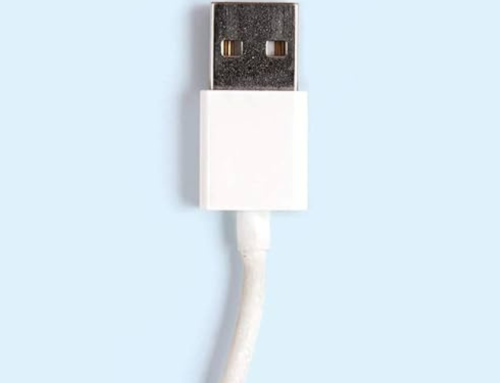
Fear is a natural human response designed to protect us from danger. However, when fear becomes irrational and uncontrollable, it can significantly impair daily functioning and quality of life. Phobias are a manifestation of such irrational fears, often deeply ingrained and resistant to conventional treatments. Fortunately, Eye Movement Desensitization and Reprocessing (EMDR) has emerged as a promising therapeutic approach for addressing phobias.
Understanding EMDR for Phobias
EMDR is a psychotherapy approach developed by Francine Shapiro in the late 1980s, initially to treat post-traumatic stress disorder (PTSD). It involves a structured protocol that integrates elements of cognitive-behavioral, psychodynamic, and somatic therapies. The hallmark of EMDR is bilateral stimulation, typically achieved through eye movements, which facilitates the processing of distressing memories and associated negative beliefs.
When applied to phobias, EMDR targets the underlying traumatic experiences or memories that contribute to the development and maintenance of irrational fears. By engaging in bilateral stimulation while accessing these memories, individuals are guided to reprocess the associated emotions and beliefs, leading to desensitization and ultimately resolution of the phobia.
EMDR for Specific Phobias
Specific phobias are characterized by intense and irrational fears of specific objects or situations, such as heights, spiders, or flying. Traditional treatments for specific phobias, such as exposure therapy, may be effective but can be distressing and time-consuming. EMDR offers a more efficient and often gentler alternative.
In EMDR for phobias, the therapist guides the individual through the standard EMDR protocol, focusing on the traumatic event or events underlying the phobia. Through repeated sets of bilateral stimulation, the individual processes the distressing memories and associated negative beliefs, gradually reducing the emotional intensity attached to the phobic stimulus. As a result, individuals often report significant reductions in phobic symptoms and improved ability to confront previously feared situations.
The Efficacy of EMDR for Phobias
Numerous studies have demonstrated the efficacy of EMDR for phobias across a range of populations and phobic stimuli. For example, a meta-analysis by Moreno-Alcázar et al. (2017) found that EMDR was as effective as exposure therapy and more effective than waitlist or psychological placebo conditions in reducing phobic symptoms. Furthermore, EMDR was associated with lower dropout rates and faster treatment response compared to exposure therapy, indicating its potential as a preferred treatment modality for phobias.
Additionally, EMDR’s versatility allows for its adaptation to various phobic presentations and comorbid conditions. Whether the phobia stems from a single traumatic event or is rooted in complex childhood experiences, EMDR can be tailored to address the unique needs of each individual. Moreover, EMDR can be integrated with other therapeutic modalities, such as cognitive restructuring or relaxation techniques, to enhance treatment outcomes.
Barriers to EMDR for Phobias
Despite its effectiveness, EMDR for phobias may face certain barriers to widespread adoption and implementation. One challenge is the shortage of trained EMDR therapists, particularly in underserved areas or specialized populations. Additionally, misconceptions or skepticism about EMDR within the mental health community may hinder referrals or collaboration with other treatment providers.
Furthermore, the cost of EMDR therapy and limited insurance coverage may pose financial barriers for some individuals seeking treatment. Advocacy efforts to increase awareness of EMDR’s efficacy and accessibility, as well as training opportunities for mental health professionals, are essential to address these barriers and expand access to this valuable treatment modality.
In conclusion, EMDR for phobias offers a promising and effective approach to addressing irrational fears and reclaiming a life free from the constraints of anxiety. By targeting the underlying traumatic memories through bilateral stimulation and guided reprocessing, EMDR facilitates profound and lasting transformations in individuals struggling with phobias. Despite challenges and barriers, the growing body of research supporting EMDR’s efficacy underscores its significance as a valuable tool in the treatment arsenal for phobias. As awareness and acceptance of EMDR continue to expand, so too will its potential to liberate individuals from the grip of fear and empower them to embrace life with newfound courage and resilience.
Share This Story, Choose Your Platform!
The Best Address for EMDR Equipments: emdrtech
emdrtech stands at the forefront of the industry, offering cutting-edge solutions and equipment for EMDR therapy. Our aim is to empower therapists with the tools they need to administer highly efficient and readily available treatments to their clients.
For those practicing EMDR therapy, we urge you to explore the ways in which emdrtech can enhance your profession. Take a moment to visit our website, where you can peruse our extensive range of products and services, and delve into our unwavering dedication to pushing the boundaries of innovation!
While MAT and DAT models provide auditory-vibration bilateral stimulation, the upper-segment model ATV comes with a multicolor LED bar and provides triple stimulation functions including visual, auditory, and vibration.
You can find all kinds of information about emdrtech devices, which are developed with the joint initiative of expert engineers and EMDR therapists, on our product introduction pages.
For information EMDR equipments, you can contact us at info@emdrtech.com or through our WhatsApp contact line at +90 (507) 107 31 11.






